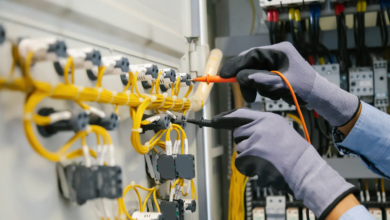Revolutionizing Workplace Safety: Integrating Risk Registers and Dust Monitoring in Australia

With Australia’s economy becoming more and more industrialized, there has been a working evolution in how risk management is approached. Modern organizations are shifting from traditional approaches to risk management, like using risk registers for compliance, to more proactive strategies where real time dust monitoring is integrated into the workflow. This shift not only improves safety on the job, but also improves efficiency for decision making and resource allocation in complicated workplaces.
“The registers of risks have long been at the base of the risk management of the organization and in general capture hazards and control measures which are still stored in paper form or examined using simple spreadsheets.” Australian businesses are now looking to turn risk registers into living dashboards. These registers will no longer sit idly but will be updated with new information, drastic visualizations, and forecasts. By using risk register real time dust monitoring, organizations will be able to manage environmental threats while they occur. This means potential risks can be discovered and taken care of instantly.
This change is key for industries which, due to dust, may incur severe health problems. The integration of digital sensors measuring the particulate matter level transforms retrospective risk registers into proactive risk management tools. When a dust concentration exceeds safe thresholds, the system automatically flags this anomaly. Safety teams can now receive actionable insights like minimizing risks and changing safety measures. This leads to a faster living safety culture.
Using Software for Bettering Safety
The integrating of dust monitoring with risk registers fulfills the chronic obligation of bettering risk management systems. IoT sensors and cloud analytic tools are at the forefront of these technological developments. Given the industrial pollution and extreme weather in Australia, everything needs to be monitored closely.
By putting dust monitoring data into a risk register, an organization creates a feedback system in the risk management process. The system not only tells you how dangerous a work environment is at that point but also measures danger over time. Safety managers can utilize historical data to prepare processes and controls when a spike in dust levels is projected. These forecasts improve strategic resource planning and increase overall resilience of the companies.
Boosting Safety In the Workplace, Along with Efficiency
The connection between risk registers and dust monitoring goes beyond legal matters; it also plays an important role in employee health. Australian businesses are starting to realize that neglecting action does not only result in penalties; it can also harm productivity, employee satisfaction, and sustainability.
Incorporated business risk management policies that include dust monitoring allow businesses to determine what operational practices lead to inadequate dust levels. For example, a manufacturing facility may be able to link certain workflows or equipment to increased levels of particulate matter. Knowing this, reasonable measures can be taken to minimize dust emission, streamline processes, and enhance work environment safety. Keeping employee health protected, along with reduced adverse health effects, is a guaranteed operational efficiency benefit from this approach.
Changing Attitudes Towards Proactive Risk Management Proposals
Australian businesses that adopt a proactive approach to risk registers have the opportunity to shift from responsive to active response mode. Once dust monitoring becomes part of risk evaluation processes, employees and supervisors have the opportunity to learn more about the potential dangers present within the work environment. Such initiatives create an environment where safety is no longer simply a regulation to comply with, but rather something each stakeholder seeks to support.
Every worker in the company is allowed to help identify risks and how to lessen them. Dashboards and alerts, as well as regular training sessions, make it easier for employees to take responsibility for safety. When risk registers are central to daily work, they not only capture risks, but also provoke conversations on how to improve safety. This collaborative spirit motivates people to do even more to improve the health and sustainability of workplaces across Australia.
Learning from Other Countries During the Pandemic: How COVID 19 Affected Risk Management in Australia
The combination of risk registers and advanced dust monitoring is yet another example of Australia’s shifting towards greater digitization in industry. These systems will incorporate machine learning, predictive analytics, and automated alerts as technology improves. In time, Australia’s businesses will enjoy a much higher accuracy in monitoring the environment. Such advances will allow firms to predict risks and take necessary preventative actions to safeguard workers and profits with unparalleled ease. The use of real time information integrated into risk registers is not optional; it is a requirement for any organization intending to succeed in a rapidly changing environment.
Conclusion
Australia’s contemporary risk management paradigm is being changed by the adoption of real-time dust monitoring and dynamic risk registers. The combination of these technologies turns compliance instruments into active systems that improve safety in workplaces, enhance the efficiency of processes, and aid in strategic planning. With the ongoing digital transformation of Australian businesses, the progress of risk registers will be instrumental in creating agile and robust organizations.





